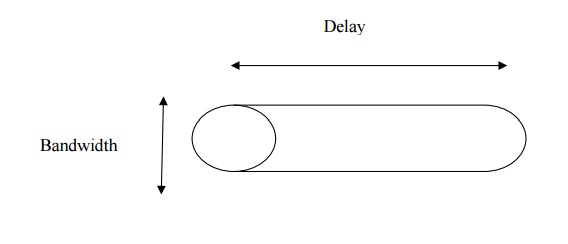Chapter: Computer Networks : Fundamentals & Link Layer
Performance :Link Layer Services
PERFORMANCE :LINK LAYER SERVICES
1 Bandwidth and Latency
Network
performance is measured in two fundamental ways: bandwidth (also called throughput)
and latency (also called delay). The bandwidth of a network is
given by the number of bits that can be transmitted
over the network in a certain period of time.

·
Latency = Propagation + transmit + queue
·
Propagation = distance/speed of light
·
Transmit = size/bandwidth
·
One bit transmission => propagation is important
·
Large bytes transmission => bandwidth is
important
Relative
importance of bandwidth and latency depends on application
For large
file transfer, bandwidth is critical
·
For small messages (HTTP, NFS, etc.), latency is
critical
·
Variance in latency (jitter) can also affect some
applications (e.g., audio/video
conferencing)
How many
bits the sender must transmit before the first bit arrives at the receiver if
the sender
keeps the
pipe full takes another one-way latency to receive a response from the receiver
If the sender does not fill the pipe send a whole delay × bandwidth product’s
worth of data before it
stops to
wait for a signal the sender will not fully utilize the network
2 Delay × Bandwidth Product
The
product of these two metrics, often called the delay × bandwidth product. A channel between a
pair of processes as a hollow pipe , where the latency corresponds to the
length of the pipe and the bandwidth gives the diameter of the pipe, then the
delay × bandwidth product gives the
volume of the pipe—the maximum number of bits that could be in transit through
the pipe at any given instant.
For
example, a transcontinental channel with a one-way latency of 50 ms and a bandwidth
of 45 Mbps is able to hold
50×10−3 sec×45×106
bits/sec = 2.25
×106 bits
or
approximately 280 KB of data. In other words, this example channel (pipe) holds
as many bytes as the memory of a personal computer from the early 1980s could
hold.

The delay
× bandwidth product is important
to know when constructing high-performance networks because it corresponds to
how many bits the sender must transmit before the first bit arrives at the
receiver.
3 High-Speed Networks
The bandwidths
available on today’s networks are increasing at a dramatic rate,and there is
eternal optimism that network bandwidth will continue to improve. This causes
network designers to start thinking about what happens in the limit, or stated
another way, what is the impact on network design of having infinite bandwidth
available Although high-speed networks bring a dramatic change in the bandwidth
available to applications, in many respects their impact on how we think about
networking comes in what does not change
as bandwidth increases: the speed of light.
4 Application Performance Needs
A
network-centric view of performance; that is, we have talked in terms of what a
given link or channel will support. The unstated assumption has been that
application programs have simple needs—they want as much bandwidth as the
network can provide. This is certainly true of the aforementioned digital
library program that is retrieving a 25-MB image; the more bandwidth that is
available, the faster the program will be able to return the image to the user.
If the
application needs to support a frame rate of 30 frames per second, then it
might request a throughput rate of 75 Mbps. The ability of the network to
provide more bandwidth is of no interest to such an application because it has
only so much data to transmit in a given period of time.
Related Topics